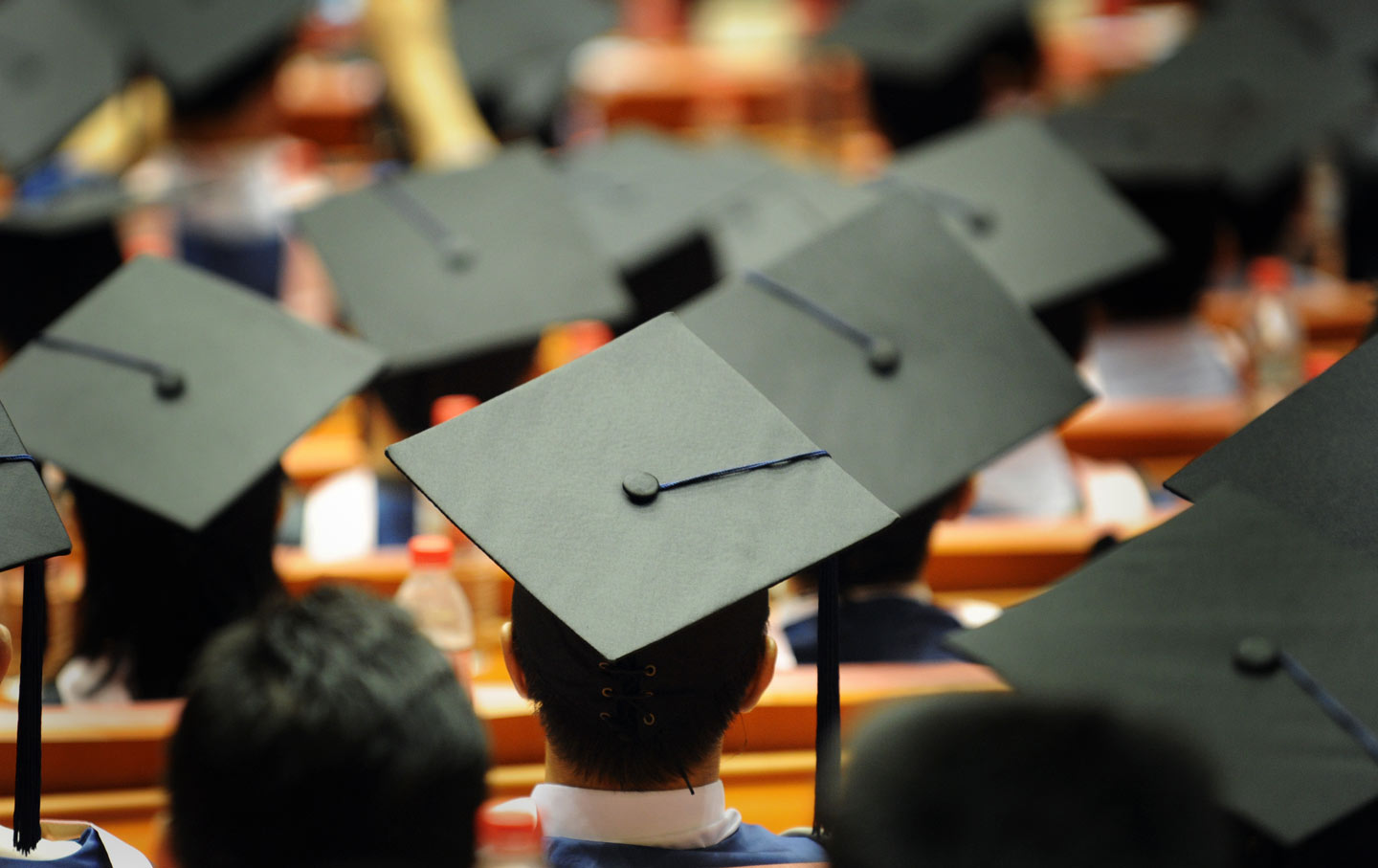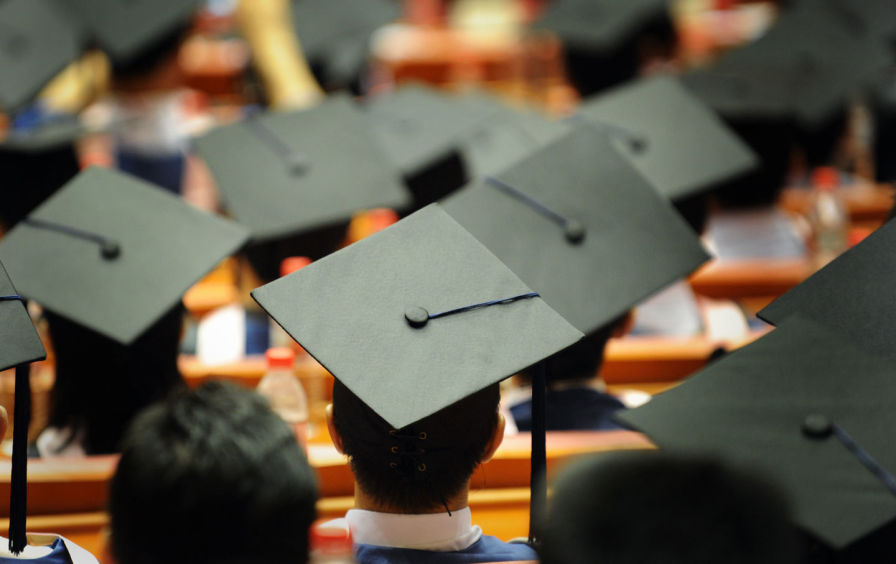By Erin Thompson
The Nation, June 5, 2018 —
Higher debt and lower employment rates create a “justice gap” that’s nearly impossible to escape.
Law school applications are up this year in what some are calling a “Trump bump,” since around a third of applicants were inspired to apply by Trump’s election. Nearly half of them identify themselves as members of a minority group. They’ve seen lawyers fighting Trump administration policies that discriminate against their communities and want to do the same. If these minority applicants succeed, they could change the balance of power in American society. If they fail, they will find themselves crushed under a lifetime of debt. But few are aware that they are taking this enormous gamble in a rigged game.
On average, minority students end up in lower-ranked law schools, which they pay more to attend than white students, resulting in higher debt burdens. Minority law graduates have lower bar-exam-passage rates, employment rates, and income levels. Given the intense competition for paid social-justice positions, few of them will end up in careers where they can support themselves while fighting for the ideals that brought them to law school in the first place.
Legal education has failed and will continue to fail minorities. This shouldn’t be surprising, since the entire American system of restricting admission to the practice of law has long been designed, explicitly or implicitly, to exclude minorities. Nowadays, of course, minorities are no longer simply prohibited from entering law school. Instead, the system loads many of them with staggering debt before killing their hopes, leaving them hanging from the very bootstraps they had hoped to use to rise.

(Shutterstock)
ATTACK ON NIGHT SCHOOLS
If you want to practice law today, you minimally have to graduate from college, then law school, and then pass a state bar examination. This is a far cry from 1851, when, in the grip of the anti-elitist ideals of Jacksonian democracy, Indiana declared that all of its citizens were entitled to practice law, the only requirement being “good moral character.” Not until 1932 did that state concede that its lawyers might need some other training—and this wasn’t as unusual as it might seem. Before the turn of the 20th century, the vast majority of America’s lawyers had never attended the few law schools that then existed. (Most of them had not gone to college, and some hadn’t even completed high school.) Instead, like Abe Lincoln, most apprenticed in a lawyer’s office and read up on state laws before passing a short oral bar exam. Apprentices had to persuade a lawyer to take them on, had to pay him, and could not perform other work to support themselves while apprenticing.
The early 20th century saw an explosion of new law schools founded to serve the needs of those for whom such conditions were daunting, especially minorities, recent immigrants, and women. Generally located in urban centers, those schools charged low tuition and were staffed with practicing lawyers who taught after working hours, so that their students could earn a living.
There was widespread horror at the prospect of night schools’ allowing a horde of undesirables to become lawyers who might charge cheaper fees and so undercut mainstream attorneys. As a result, the Association of American Law Schools, representing the more expensive, university-affiliated institutions, banded together with the American Bar Association (ABA) to campaign for states to raise the requirements for aspiring lawyers. The target: keeping minorities out of the profession.
Shortly after World War I, for instance, a New York lawyer argued that it was “absolutely necessary” to require law-school applicants to have attended college, or the country wouldn’t have lawyers “able to read, write, and talk the English language—not Bohemian, not Gaelic, not Yiddish.” Similarly, at a 1929 ABA meeting, a member claimed that the majority of complaints received by the Philadelphia Bar Association concerned “Russian Jew boys” and insisted that “these fellows that come up out of the gutter” be required to complete a college education to “absorb the American ideals.”
The process of restricting admission to the bar took decades. In 1923, although most aspiring lawyers attended law school, no state required them to do so. Only in the post–World War II years did all but a handful of states insist upon a law degree for everyone who wanted to practice in the legal system. Meanwhile, the ABA would be appointed the accrediting body for law schools in almost all jurisdictions and the cheaper, more accessible night schools would either close up shop or transform themselves into elite clones as best they could—and raise their tuitions to match.
WHY DO MINORITY LAW STUDENTS PAY MORE FOR WORSE EDUCATIONS?
In 1968, the year Martin Luther King Jr., was assassinated, only 1 percent of American lawyers were black. Other minority groups had so few lawyers that the numbers weren’t even tallied. Since then, those figures have steadily increased, but the percentage of minority students in the elite law schools that offer the best chances for a prestigious, well-compensated career remains far lower than at non-elite ones. (The same has been true of women: While, in 2016, female law students outnumbered males for the first time, only six of the top 20 law schools had at least half-female student bodies.)
The reason: Law School Admission Test (LSAT) scores. Minority and underprivileged students have consistently had lower average LSATs than white and wealthier test takers, even when other ways of measuring their abilities and achievements did not show a difference. There has been much debate about the causes of this score gap. The expense of the preparation courses that teach LSAT-taking skills is certainly one reason. Others suggest that the test itself has hidden racial biases, since it calls for analyses that might be performed differently by those with different backgrounds. (Or perhaps not so hidden: As late as 1986, LSAT takers had to answer questions about a reading passage set in a country where slavery was legal, featuring slaves who insisted that they found their condition “extremely pleasant.”)
The LSAT score gap means that American law schools have developed a kind of educational apartheid: Minorities disproportionately end up at lesser law schools. In 2017, for instance, Arizona Summit Law School topped the charts as America’s most diverse law school, while also earning another record: worst bar-passage rate. Only around 27 percentof its graduates passed the bar exam on their first try and only 34 percent landed long-term, full-time legal jobs.










